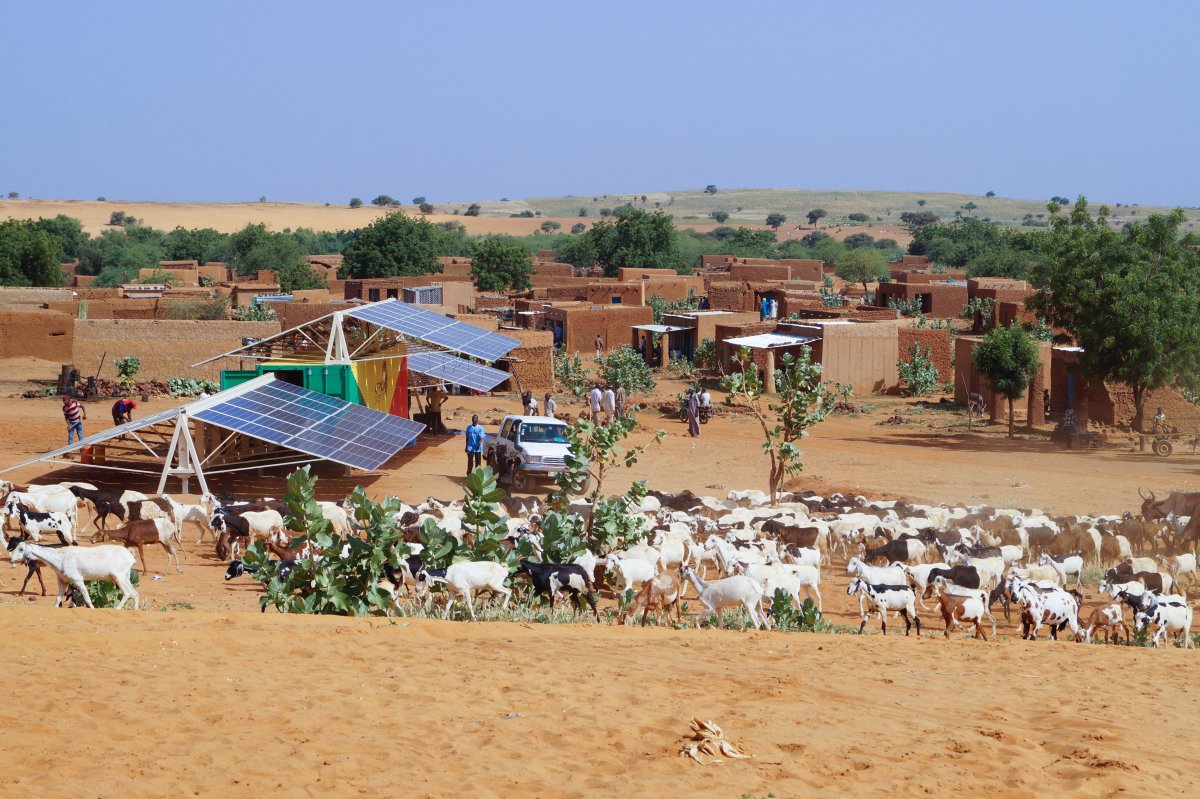Electricity supply in Africa: why do so many people lack electricity?
Source: Heise.de added 23rd Dec 2020During the Christmas season, Germany is illuminated in many places. Light chains make Christmas trees shine and decorate houses. Different in Africa. When the sun goes down, many parts of the continent are shrouded in darkness – whatever the season. Despite enough sun and wind to generate electricity, many people still have no access to electricity. There are many possible solutions – also from Germany. Why is it still so difficult to electrify Africa?
Hardly any electricity in rural areas Room Despite great progress in recent years, according to the International Energy Agency (IEA), around 580 Millions of people in Africa have no electricity – with a population of around 1.3 billion people. Because many of the inhabitants of African countries live in remote, sparsely populated areas, where the expansion of central electricity networks is not worthwhile from an economic point of view.
“Rural areas exclusively via central power plants with widely branched transmission and distribution networks electrification does not appear to be expedient for sub-Saharan Africa, “says Daniel Busche, head of the energy access program at the German Society for International Cooperation (GIZ). “Decentralized approaches are better suited for this.”
Few solar systems This means systems that have no connection to need the central power grid and get their electricity mostly from renewable energies. Because while access to electricity from a coal or gas power plant requires a direct line, electricity generated by the sun is theoretically accessible to everyone and everywhere. But Africa is not far yet: “The continent with the richest solar resources in the world has only installed five gigawatts of solar systems, less than one percent of the global sum,” writes the IEA.
One the most promising solutions are so-called mini-grids. These systems, which generate electricity from solar modules, can supply electricity from a few houses to numerous villages, depending on their size. But the investment costs are high and profitability is often low, explains Busche. In addition, there are still few operators who are willing to build such systems 15 or 20 to operate for years. “The market is developing slowly.”
Another big problem is the selection of suitable villages for mini-grids, explains Nabin Gaihre from the Munich company TFE Energy. Developers lack important knowledge: Where are these villages located? How tall are you? How much electricity do they need and can the residents pay for it? The company has developed a tool that uses satellite images to provide much of this necessary information. According to its own information, the company works together with the World Bank, the government of Nigeria and several energy companies.
Decentralized mini-grids While mini-grids need staying power, home systems deliver solar power faster and easier. They consist of small solar modules that are installed on a roof and that, depending on their size, can charge a cell phone, operate a television or light up a house. The German company Mobisol, which was later bought by the French energy company Engie, offers this in Tanzania, Kenya and Rwanda. With these small systems that can generate 50 watts up to 200 watts Customers also run their businesses, as Mobisol explains: from cell phone charging stations to hair salons and grocery stores. Solar home systems have their limits. They are “important, but their capacity is limited when the demand for energy increases,” says Busche.
There are offers even for the most remote and poorest communities . The Berlin social enterprise Little Sun, for example, which was co-founded by the Danish-Icelandic artist Olafur Eliasson, sells solar lamps and solar chargers at reduced prices in countries such as Ethiopia and Nigeria. They can cover two of the most fundamental needs of many people in Africa: lighting and charging the cell phone. That was shown this year during the corona pandemic, says Felix Hallwachs, head of the Little Sun Foundation. The company supplied health care workers with solar chargers.
The solar power options have increased in many places in Africa in recent years. On the one hand, this is due to the fact that the components – such as solar modules – have become cheaper, explains Busche. On the other hand, with so-called mobile money, there is now the option of paying off the costs for the systems or electricity in installments. Mobile Money allows customers to send money – even very small amounts – via mobile phone.
Decentralized approaches to electricity supply “offer the possibility of skipping the construction of large, national electricity grids in order to make all people more efficient and to enable possibly more democratic access to electricity, “says Hallwachs. He believes there will be many more great innovations in technologies and business models in the years to come. Busche from GIZ also says: “I am convinced that we cannot cope with the electrification of Africa without decentralized approaches.”
(olb )
brands: AM Charge Direct Mini Mobile other SUN media: Heise.de keywords: Mobile Phone
Related posts
Notice: Undefined variable: all_related in /var/www/vhosts/rondea.com/httpdocs/wp-content/themes/rondea-2-0/single-article.php on line 88
Notice: Undefined variable: all_related in /var/www/vhosts/rondea.com/httpdocs/wp-content/themes/rondea-2-0/single-article.php on line 88
Related Products
Notice: Undefined variable: all_related in /var/www/vhosts/rondea.com/httpdocs/wp-content/themes/rondea-2-0/single-article.php on line 91
Warning: Invalid argument supplied for foreach() in /var/www/vhosts/rondea.com/httpdocs/wp-content/themes/rondea-2-0/single-article.php on line 91
